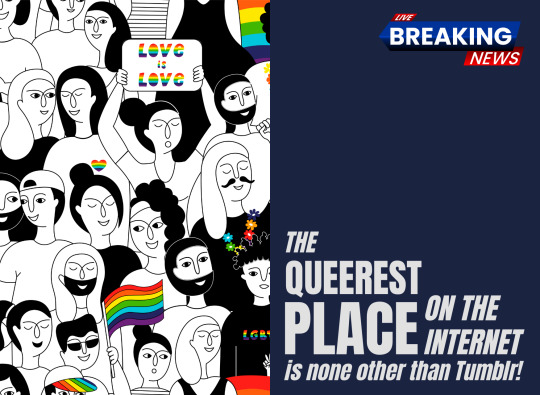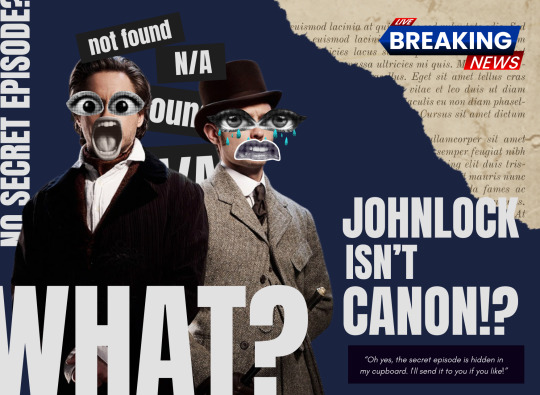#LostInTheTumblrVerse
Explore tagged Tumblr posts
Text
[W3: Remember Tumblr? We all are missing this digital icon!]
Are you keeping up? Captain Tumblr, its sailors, and their ships hit different—stirring the waters of digital discourse like no other.
Public spheres—the mature, calm, and ever-so-demure older sister—create spaces for people to connect, debate, and speak their minds, all in the name of open communication, critical thinking, and a dash of democracy. Then there’s the chaotic younger sibling, micro-public spheres—modern, chic, and armed with its own charm: platform vernaculars. But despite their differences, both share the same fate: surveillance and algorithmic bias creeping in, twisting conversations, distorting discourse, and trapping us in echo chambers.
But what if there's one place on earth that mastered this messy digital chaos?🤯🤯🤯

1. Tumblr's got a point, Tumblr’s an icon, Tumblr's a legend and Tumblr's the moment
_#Nobody’s_Cool_in_Middle_School
Tumblr became the ultimate hangout for teens craving a more authentic and “cool” space, especially as Facebook started feeling more like a place for parents and older generations. As one 2014 post summed it up: “I chose Tumblr because I’m not attractive enough for YouTube, not popular enough for Twitter, and Facebook is dumb.” (Reeve 2016) It wasn’t just memes and reblogs—it was a hub for self-expression, exploration, activism, and identity exploration, especially for LGBTQ+ youth - which for teens, that’s all they could have asked for.
"Charlie: (19, trans male, queer, urban) Knowing there were other people who were this sexuality or they were also transgender, that was a really big thing for me to be able to see—that there were other people that were also figuring themselves out sexuality wise. That was a nice thing for 15-year-old me to find out about." (Byron et al. 2019)

*this is a joke, I still love you Facebook😉
2. Shipping Cultures in Tumblr: The good, the bad, and the ugly
_What's the hype?
Remember when we spent hours curating our perfect Tumblr aesthetic, writing 2,000-word fan theories, and waging war over OTPs? Yeah, we were all unhinged—but in the best way.

Shipping culture was Tumblr’s bread and butter, where fans obsessed over their favorite pairings—canon or not. With customizable blogs, anonymity, and a solid tagging system, users shared fanfics, art, and deep-dive analysis. Same-sex ships especially flourished, sparking conversations about queer representation and visibility, which earned Tumblr the nickname: "The queerest place on the internet" (Hannell 2023).

However, Tumblr wasn’t without drama (Oh yes she’s a drama queen indeed!), as intense "shipping wars" occasionally turned toxic, highlighting both the passion and complexities of this vibrant online culture. Well, let’s just say, it’s not Tumblr without posts saying why Drarry is better than Dramione, or “shippers” at each other’s throats arguing about TomStar and Starco.


_Types of ships
Canon Ships: Pairings that are officially confirmed (e.g. Hiccup and Astrid from How To Train Your Dragon).
Non-Canon Ships: Relationships imagined by fans that are not confirmed or even hinted at (e.g., Johnlock in Sherlock Holmes).
Crack Ships: Wild, humorous pairings with little to no narrative basis (e.g. Twilight Sparkle in My Little Pony: Friendship is Magic and Mordecai from Regular Show).

_Canon or Not Canon: When your OTP becomes NOTP.
For fans, a canon ship feels like validation, fueling their imagination with more fanfic and art. But non-canon ships thrive too, giving creative freedom to explore “what if” scenarios—especially when the story’s relationships fall flat. Fans love finding subtext, chemistry, or representation where creators didn’t.
At the end of the day, canon status doesn’t make or break a ship’s importance. Shipping is all about how fans connect with the pairing, the joy it brings, and the communities and stories they build around it. I mean come on, we all bond some way or another when talking about a random 3000 words fanfic of Johnlock, right?
_Case study: The Johnlock conspiracy (TJLC) - We are all detectives now!

The rise of the Sherlock fandom and the "Johnlock" ship (Sherlock Holmes/John Watson) is Tumblr's most iconic shipping case. Fans were drawn to the chemistry between Benedict Cumberbatch and Martin Freeman, interpreting romantic subtext, even picking up on subtle clues (i.e. motifs, body language) that was never even confirmed in the show. However, not everyone was having it, with some going as far as calling it queerbaiting—teasing a same-sex relationship without actually following through.
And so it began, Tumblr turned into the hub for fan art, fanfic, and deep-dive theories, with TJLC fueling arguments on whether this is a hidden slow-burn romance arc or simply outrageous. The reblog culture amplified discussions and beliefs, turning Johnlock into a cultural phenomenon. While this showcased Tumblr’s influence, it also led to clashes with showrunners and fandom toxicity when Johnlock didn’t become canon, with Moffat calling queerbaiting claims “ridiculous” and Gatiss joking, “Oh yes, the secret episode is hidden in my cupboard. I'll send it to you if you like!”
Final thoughts:
Tumblr wasn’t just a website; it was a cultural shift. From fan theories to self discovery, it shaped how we interact with the media. So maybe we don’t use it like we used to—but its legacy? #Still unmatched.

References:
Byron, P, Robards, B, Hanckel, B, Vivienne, S & Churchill, B 2019, ‘“Hey, I’m Having These Experiences”: Tumblr Use and Young People’s Queer (Dis)connections’, International Journal of Communication, vol. 13, pp. 2239–2259, viewed <https://ijoc.org/index.php/ijoc/article/view/9677>.
Hannell, B 2023, ‘The queerest place on the internet?: Queer belonging on Tumblr’, Sociological Studies Research, viewed <https://socstudiesresearch.com/2023/02/03/the-queerest-place-on-the-internet-queer-belonging-on-tumblr/>.
Reeve, E 2016, ‘The Secret Lives of Tumblr Teens’, The New Republic, viewed <https://newrepublic.com/article/129002/secret-lives-tumblr-teens>.
#Tumblr_for_the_Memories#InTheTumblrLane#LostInTheTumblrVerse#JohnLock_isn’t_real!?#TumblrVibes#queerhub#MDA20009
0 notes